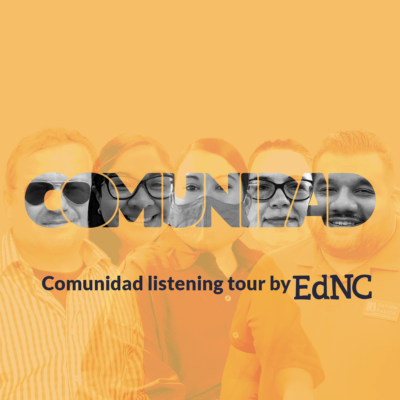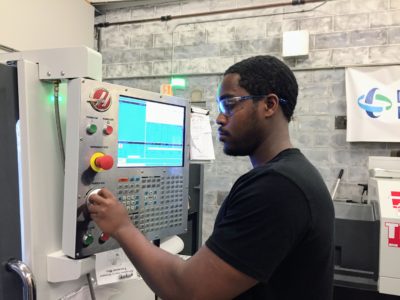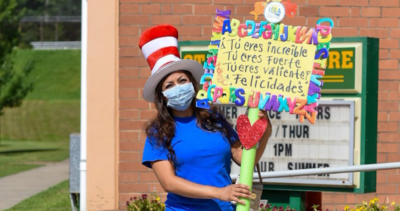Share this story
- When @jccEDU professor Aaron Brickman noticed some of his students were struggling with a language barrier, he stepped up to provide them with resources they needed to succeed in the classroom.
- “A person could be the next Einstein, the next great mathematician, but they need that sort of bridge to connect things,” said Scarlet Hernandez-Vargas, a student at @jccEDU who translates physics lectures into Spanish for her fellow students.
Population projections in North Carolina suggest that the state’s residents will become more racially and ethnically diverse in coming decades, with the non-Hispanic white majority expected to shrink to just 52% in 2050, down from 61% in 2020. One of the factors influencing that is the large growth in North Carolina’s Latinx population.
In the last decade, North Carolina’s Latinx population has grown by 40% and now makes up 11% of the state’s population. According to Carolina Demography, it is expected to grow to 14% by 2050.
As North Carolina’s demographics continue to diversify, the state’s community colleges are also becoming more diverse. Colleges are finding ways to encourage enrollment among students from different backgrounds and represent their heritage, customs, and native languages in classrooms.
![]() Sign up for Awake58, our newsletter on all things community college.
Sign up for Awake58, our newsletter on all things community college.
How have community colleges responded?
At Johnston Community College (JCC), Aaron Brickman, department chair of natural sciences, engineering, and math, realized that some of his students did not have the tools they needed to succeed. After COVID-19 prompted a transition to remote instruction, Brickman asked all of his students to find online learning tools, such as YouTube videos, that made the complicated physics concepts he was teaching easier to understand. He was surprised to find that a few students found resources that were not in English, which made him realize some students were relying on resources that he could not provide to succeed in his class.
Nineteen percent of traditional degree-seeking students identify as Hispanic at JCC compared to 13% across the community college system overall. Although 61% of North Carolina’s Hispanic population was born in the US, language barriers are still a prominent hurdle that can interfere with students’ ability to successfully work toward a postsecondary degree or credential.
Brickman shared that the majority of his students struggling with a language barrier were Spanish speakers, with a few exceptions. “I looked around in my class and a fifth of them spoke Spanish,” he said.
He asked himself, “How can I help these students that I’m not going to reach with an English-speaking tutorial if they’re struggling?”
Ciencias Tecnología Ingeniería y Matemáticas
Brickman made it his mission to ensure that all of his students could actively engage with course material and obtain a degree or credential, regardless of their level of English proficiency. He realized that to do so, it would be vital for his students to have key concepts explained to them in their native language. With this understanding, Brickman created the Ciencias Tecnología Ingeniería y Matemáticas (CTIM) program, which translates to Science, Technology, Engineering, and Math (STEM) in English.
CTIM is a sponsorship program that allots funding to hire bilingual JCC students in the STEM department to act as translators for Spanish-speaking students in need, Brickman explained. These student translators have excelled in their introductory math and science courses and are confident enough in their language skills to film short explanatory videos of key classroom concepts in Spanish. Translators are paired with instructors who request translation for students in their class, and the videos act as a virtual resource that can serve students for years to come.
Why CTIM?
Brickman praised the dynamic nature of CTIM, stating that it not only benefits the non-native English speakers in the classroom, but it has also transformed the college experience for the student translators.
CTIM has allowed student translators to find a sense of purpose at JCC that goes beyond their coursework. Brickman recognized this change in one student, Ricardo Hernandez Rojas, who was one of the founding translators for CTIM and who has grown as a student alongside the program.
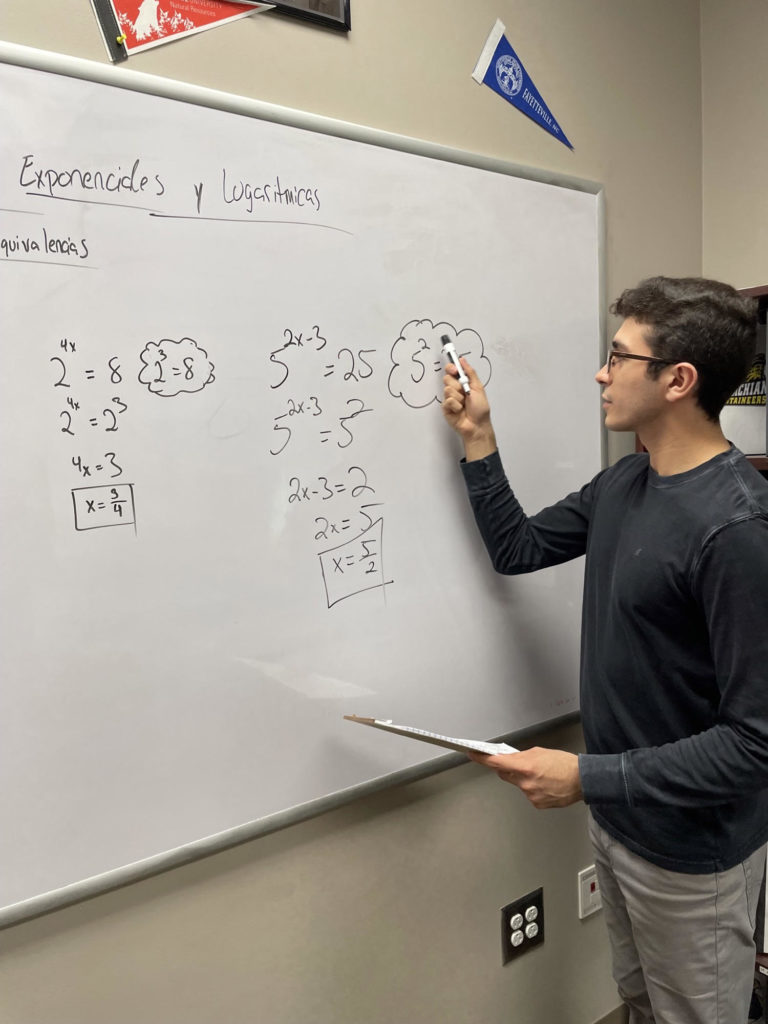
“He’s a great student,” Brickman said, “but [CTIM] clearly has changed it to now he’s a JCC student. CTIM gave him an identity that’s associated with JCC.”
Hernandez Rojas is a second-year student majoring in engineering and intends to transfer to a four-year university. When asked why he chose to participate in CTIM, he said, “The way I saw it was like a personal growth opportunity because I would be making math videos for people who speak Spanish, but I would also be dipping my foot in the water on how to teach.”
Apart from the professional experience the position provides, student translators opted to join the program out of a desire to help their peers excel.
“It’s a wholesome feeling to know that you’re helping out someone who can be lost and doesn’t speak English,” said Hernandez Rojas. His classmate and fellow CTIM translator, Scarlet Hernandez-Vargas, echoed this sentiment, saying, “A person could be the next Einstein, the next great mathematician, but they need that sort of bridge to connect things. And I think through this program, I might be able to help students be the best thing they can be and just succeed.”
By enhancing the sense of belonging for both the students receiving translation and those providing it, CTIM can help keep those involved in the program on track toward their degree.
“As far as the business side of things, this program is going to help retention not only for the [student translators] that are going through it, but [it will also help] those other students that this is going to benefit,” said Brickman.
Though CTIM is in its early stages and is unique to JCC’s STEM department, it is clear that it is a worthwhile program with the capacity to grow.
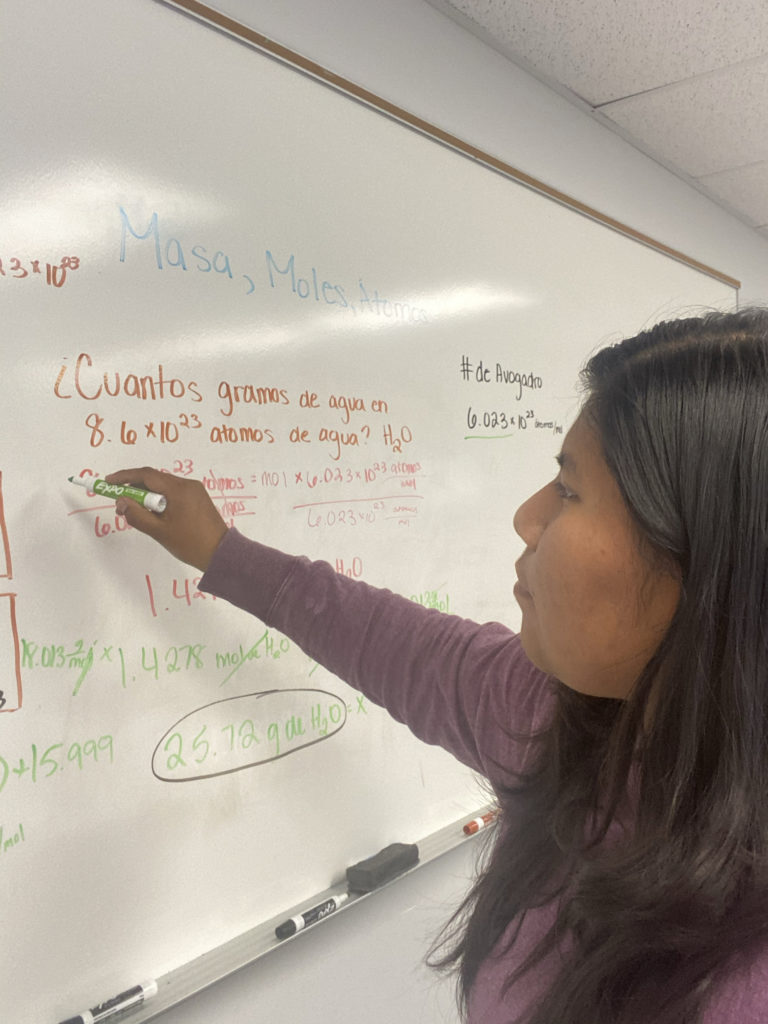
What other resources exist for students at JCC?
Other departments at JCC with a significant number of non-native English speakers have also recognized the need to provide resources for these students. Among them is the cosmetology department, which consistently has Spanish speakers enrolling in courses. To accommodate all students, the department offers day-time classes in English and night-time classes taught in both Spanish and English. Students have the option to choose which class works best for them.
Frankie Avery, chair of the cosmetology department, explained that offering classes entirely in Spanish would be ideal, but the department only has one full-time bilingual instructor.
“I think the hardship [is] getting committed bilingual instructors or just finding them. They’re rare,” said Avery.
Without enough instructors, Avery has had to fill the resource gap in other ways. She says that using online translation services, such as Google Translate, has been useful for communicating departmental announcements to Spanish-speaking students. The department has also collaborated with a Spanish interpreter and JCC instructor to facilitate communication. Through these methods, Avery has witnessed her Spanish-speaking students grow more connected to her and the program.
Avery recognizes that for her students to pass the practical and written state exams that will provide them with their cosmetologist license and allow them to practice in North Carolina, they need to receive course material in the language they best understand. However, the written exam is only offered in English, Avery explained. To account for this, Avery aims to implement the CTIM model within her department.
“We’re going to record videos in Spanish so that our students can at least understand what’s happening. And then we’ll implement it [in class] in English,” said Avery. The videos would explain key concepts that students could review in their native language, while still learning the English necessary to pass the state exam and receive their credentials during class.
Next steps
JCC is not the only community college in the system with a rising Spanish-speaking population, but it has taken significant strides toward serving the needs of these students to ensure they can continue their education. Both Brickman and Avery have witnessed the improvement of their Spanish-speaking students on account of the resources they have provided, and they are committed to continuing to serve this population.
Though the STEM and cosmetology resources are only offered within their departments, Avery noted that the work should not stop there. “I think we really need to do it all around campus,” she said.
“I think of myself if I was in another country, speaking a different language, [it would mean a lot] for someone to actually take the time to care enough and give me what I need so that I can produce excellence as well,” said Avery.
Recommended reading
